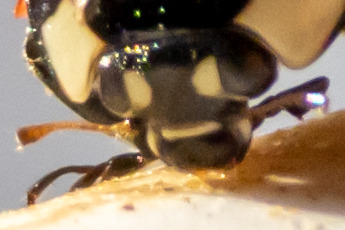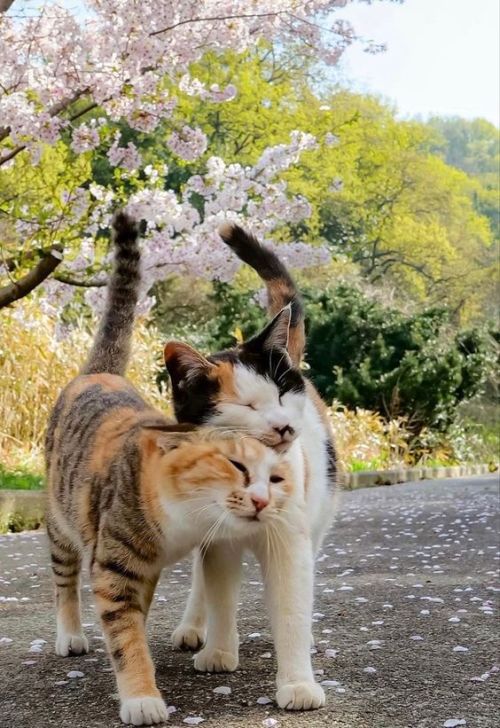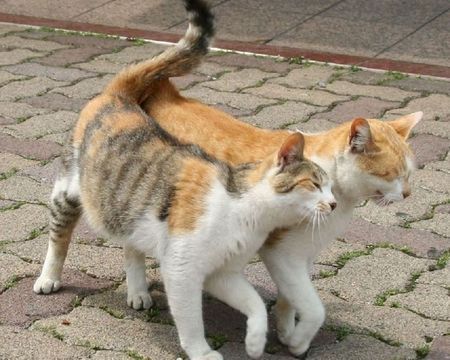Sphex Ichneumoneus, Male. (Females Are Bulkier With Bigger Mandibles). What's Up, Dude?
Sphex ichneumoneus, male. (Females are bulkier with bigger mandibles). What's up, dude?










More Posts from Goblin-in-the-rain and Others
![Bilateral Gynandromorph Carpenter Bee [x]](https://64.media.tumblr.com/a6394b4af38a2ad62fa4405f80e485c2/185eb66117b083a5-9a/s500x750/ca5485282ef8c4864ba980ba284a864dd575563b.jpg)
Bilateral gynandromorph carpenter bee [x]
Uh oh fellas

[Image ID: a screenshot of my drafts, of which there are 108. /End ID]

Ladybug (Coccinella septempunctata) close-up. As you can see, this Coleoptera has a skull painted on its head, just like a common heavy metal band member:

Many thanks to @sarcasm-andotherstuff for her pareidolic superpowers.







since i made a post for inti here’s one for latte too????
latte is. a guy. his name is latte because i worked at a coffee shop when i got him (original). he’s about 12 years old and i found him in an ad online. he was owned by a BP breeder and because of his deformities and issues he wasn’t a breeding prospect, which is totally fair. what wasn’t fair was he was obviously neglected, kept in a small plastic drawer with no enrichment and just a water bowl, his excrement was still in there as well. the guy did the right thing by putting him up for sale if he didn’t have the time or interest for him, but still. that treatment of him wasn’t right. anyway
he has a deformed tail which he seems to have no feeling in at all. he doesn’t know how to shed his skin - he’ll go into blue and then just sit there and occasionally rub his face on things, but nothing more, so he needs bathing monthly and i have to help him shed. he has a head wobble and went off his food for almost a year for seemingly no reason. he’s Very head shy and will freak out if you go near his face (usually).
he just like. forgets how to snake. but then one day his brain cell Activates and he’s suddenly uber hungry and active. i’d love to know what goes on in those neurons when his snake side awakens
he’s a very sweet guy who just wants to chill but has no idea where or who he is at any given time. that’s okay i love him <3 best impulsive preloved buy ever.






Relationship goals ♡



Prancing Peacock Spiders
Maratus volans is perhaps the most widely known member of the genus Maratus, also known as peacock spiders– part of the jumping spider family– which contains 108 recognised species. Maratus volans is common across Australia and the island of Tasmania, and occur in a variety of habitats. They are most commonly found among leaf litter and dry vegetation, especially in dunes, grasslands, and sparse deciduous forests.
Peacock spiders like M. volans are extraordinarily small; both sexes only reach about 5 mm (0.19 in) in length. Members of the Maratus genus are famous for the male’s coloration, and M. volans is no exception; the abdomen is covered in brightly colored microscopic scales or modified hair which they can unfold for mating displays. Some males can also change the color of their scales, and the hairs can reflect both visible and ultraviolet light. Female M. volans lack this distinctive coloration, and are a drab grayish brown.
Reproduction for M. volans occurs in the spring, from August to December. During this period, males will approach females and raise their patterned abdomens and third pair of legs for display. He then approaches, vibrating the fan-like tail, and dances from side to side. If a female is receptive, he then mounts her; if not, she may attempt to attack and feed on him. This may also occur post-copulation. In December, the female creates a nest in a warm hollow in the ground where she lays her eggs. Each cluch contains between 6 and 15 eggs, though females typically lay several clutches. Male M. volans hatch the following August, while females typically hatch in September. Both sexes mature quickly and typically only live about a year.
Like other jumping spiders, peacock spiders like M. volans do not weave webs. Instead, they hunt during the day time using their highly developed eyesight. These spiders are also able to jump over 40 times their body length, which allows them to pounce on unsuspecting prey like flies, moths, ants, crickets, and other, much larger spiders. Other spiders are also common predators of M. volans, as well as wasps, birds, frogs, and lizards.
Conservation status: None of the Maratus species have been evaluated by the IUCN. However, it is generally accepted that they are threatened by habitat destruction, like many other insects.
If you like what I do, consider leaving a tip or buying me a ko-fi!
Photos
Jurgen Otto 2 & 3
-
 squidsmenagerie reblogged this · 3 months ago
squidsmenagerie reblogged this · 3 months ago -
 goblin-in-the-rain reblogged this · 3 months ago
goblin-in-the-rain reblogged this · 3 months ago -
 fantabulisticity reblogged this · 1 year ago
fantabulisticity reblogged this · 1 year ago -
 fantabulisticity liked this · 1 year ago
fantabulisticity liked this · 1 year ago -
 blattodean reblogged this · 1 year ago
blattodean reblogged this · 1 year ago -
 itsoverfeeling liked this · 1 year ago
itsoverfeeling liked this · 1 year ago -
 waspygav liked this · 1 year ago
waspygav liked this · 1 year ago -
 rainbowfiedmysotiz reblogged this · 1 year ago
rainbowfiedmysotiz reblogged this · 1 year ago -
 rainbowfiedmysotiz liked this · 1 year ago
rainbowfiedmysotiz liked this · 1 year ago -
 comrade-slugcat reblogged this · 1 year ago
comrade-slugcat reblogged this · 1 year ago -
 portiafimbriata reblogged this · 1 year ago
portiafimbriata reblogged this · 1 year ago -
 portiafimbriata liked this · 1 year ago
portiafimbriata liked this · 1 year ago -
 bug-kid-benny liked this · 1 year ago
bug-kid-benny liked this · 1 year ago -
 jasonberbera liked this · 1 year ago
jasonberbera liked this · 1 year ago -
 mrdxfnf liked this · 1 year ago
mrdxfnf liked this · 1 year ago -
 creepy-crowleys reblogged this · 1 year ago
creepy-crowleys reblogged this · 1 year ago -
 woman-gaya reblogged this · 1 year ago
woman-gaya reblogged this · 1 year ago -
 merry-mouse liked this · 1 year ago
merry-mouse liked this · 1 year ago -
 solemnmagpies reblogged this · 1 year ago
solemnmagpies reblogged this · 1 year ago -
 melodraca liked this · 1 year ago
melodraca liked this · 1 year ago -
 buttstuffbo liked this · 1 year ago
buttstuffbo liked this · 1 year ago -
 mlleclaudine reblogged this · 1 year ago
mlleclaudine reblogged this · 1 year ago -
 5gsugar reblogged this · 1 year ago
5gsugar reblogged this · 1 year ago -
 lemongxts liked this · 1 year ago
lemongxts liked this · 1 year ago -
 anomalous-entity-s liked this · 1 year ago
anomalous-entity-s liked this · 1 year ago -
 wingeddonkey liked this · 1 year ago
wingeddonkey liked this · 1 year ago -
 fabrikrattejaks liked this · 1 year ago
fabrikrattejaks liked this · 1 year ago -
 riotouseaterofflesh reblogged this · 1 year ago
riotouseaterofflesh reblogged this · 1 year ago -
 riotouseaterofflesh liked this · 1 year ago
riotouseaterofflesh liked this · 1 year ago -
 ofals reblogged this · 1 year ago
ofals reblogged this · 1 year ago -
 ofals liked this · 1 year ago
ofals liked this · 1 year ago -
 xn--ko8h liked this · 1 year ago
xn--ko8h liked this · 1 year ago -
 futurebird reblogged this · 1 year ago
futurebird reblogged this · 1 year ago -
 the-shrouded-ghost liked this · 1 year ago
the-shrouded-ghost liked this · 1 year ago -
 spooky-puptarts liked this · 1 year ago
spooky-puptarts liked this · 1 year ago -
 writerofweird reblogged this · 1 year ago
writerofweird reblogged this · 1 year ago -
 spectruminterests liked this · 1 year ago
spectruminterests liked this · 1 year ago -
 bugs-are-buddies liked this · 1 year ago
bugs-are-buddies liked this · 1 year ago -
 qiisevil reblogged this · 1 year ago
qiisevil reblogged this · 1 year ago -
 qiisevil liked this · 1 year ago
qiisevil liked this · 1 year ago -
 andmaybegayer liked this · 1 year ago
andmaybegayer liked this · 1 year ago -
 microecobus reblogged this · 1 year ago
microecobus reblogged this · 1 year ago -
 caprinearcanist reblogged this · 1 year ago
caprinearcanist reblogged this · 1 year ago -
 caprinearcanist liked this · 1 year ago
caprinearcanist liked this · 1 year ago -
 humanoidautomaton liked this · 1 year ago
humanoidautomaton liked this · 1 year ago

Hi it’s me puddleorganism if you’re confused why you got a billion hoops from me
298 posts


